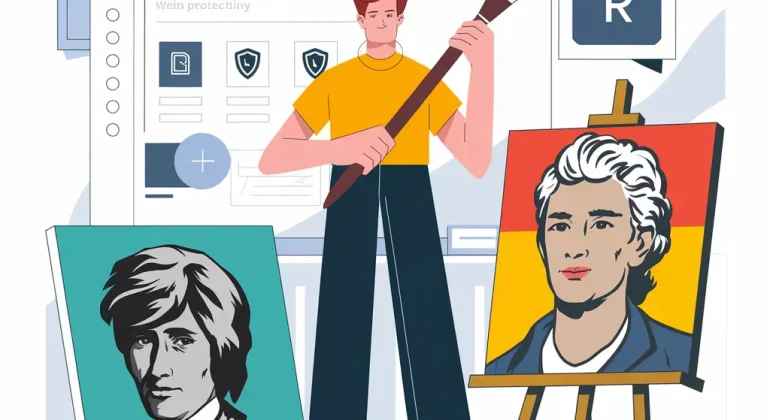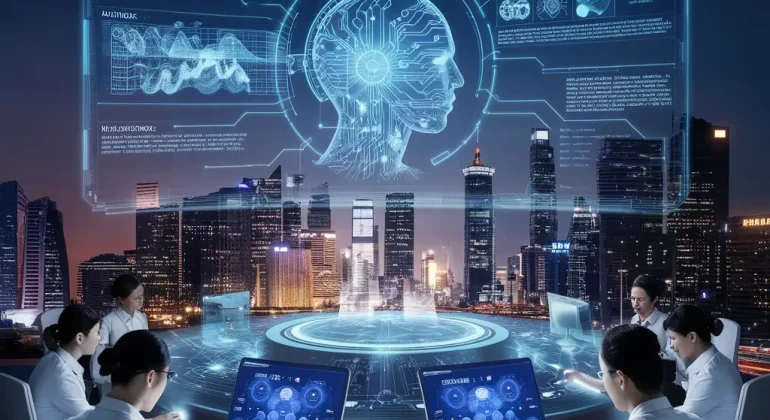Art Market and Trademarks: Navigating Intellectual Property in the Art World
The art market is a sector where intellectual property plays a key role. While copyright remains the primary legal tool for protecting artistic creations, trademark law has become an essential strategy for safeguarding the names, logos, and reputations of artists, galleries, and auction houses.
According to the 2023 annual report of the INPI, 90,874 trademark applications were filed in France that year, highlighting the growing importance of brand protection, including in the art sector.
The challenge is twofold: ensuring the protection of artists’ and galleries’ identities against fraudulent use and guaranteeing the authenticity of artworks. The unauthorized use of well-known artists’ names to sell counterfeit goods is a recurrent issue that threatens the market’s value.
The Role of Trademarks in the Art Market
Trademarks play an essential role in the valorization of artists, galleries, and auction houses. They protect brand identity and market reputation, ensuring recognition and exclusivity.
Trademarks and Art Galleries’ Business Names
Art galleries must register their names and visual identities as trademarks with the INPI in France or the EUIPO for a European trademark. This registration prevents identity theft, commercial parasitism, and disputes over exploitation rights.
Prestigious galleries such as Gagosian Gallery and David Zwirner have established their names as trademarks to secure international recognition and prevent fraudulent use.
Artists’ Trademarks and Personal Branding
Many contemporary artists, including Jeff Koons, Banksy, and Damien Hirst, have registered their names as trademarks to control the commercialization of their works and derivative products, such as posters, miniature sculptures, and NFTs.
A critical legal question arises upon an artist’s death: Who owns the trademarked name, and who can exploit their image commercially? Some artist estates, such as Christo and Jeanne-Claude’s, have attempted to trademark their names to maintain control over posthumous exploitation.
Counterfeiting and Trademark Misuse
The art market faces a growing counterfeiting issue, affecting both artworks and branding elements, such as gallery logos or famous artist names.
Some online platforms and secondary markets exploit gallery and artist names without authorization, selling fake or unauthorized reproductions. Fraudulent NFTs have become a major concern, prompting artists to register their digital signatures and names as trademarks.
Copyright vs. Trademarks: Which Protection for Artworks?
While copyright law primarily governs the protection of artistic works, trademark law can apply in specific cases.
Copyright Protection for Artistic Works
Under French law, copyright automatically protects any original work from its creation, as stated in Article L111-1 of the Intellectual Property Code.
Artists hold moral rights (which are inalienable) and economic rights (which can be transferred). An art gallery must obtain explicit authorization to use or reproduce a copyrighted artwork.
Three-Dimensional Trademarks for Artistic Creations
Some artworks can be registered as three-dimensional trademarks if they are distinctive and not purely functional.
For example, Jeff Koons’ Balloon Dogs have been trademarked to prevent unauthorized reproductions.
Conflicts Between Copyright and Trademarks
Several conflicts arise between copyright and trademark law, including:
- Can a gallery register an artwork as a trademark without the artist’s consent? No, unless the artist has transferred or licensed their rights. Unauthorized registration could be challenged as an infringement of the artist’s moral and economic rights.
- Can a brand use an artist’s work without financial compensation? Generally no, unless it falls under an exception such as fair use or public domain. Unauthorized use could lead to legal action for copyright or trademark infringement.
- When copyright expires (70 years after the artist’s death), can a trademark holder monopolize the work? A trademark cannot grant exclusive rights over a work in the public domain. However, a trademark on a name, logo, or distinctive element related to the artist may still provide some control over commercial use.
Notable Litigation and Case Law
Banksy vs. Full Colour Black, R 1246/2021-5 (2021)
Banksy registered several of his works as trademarks with the EUIPO. However, the company Full Colour Black contested these filings, arguing that Banksy was not using the trademarks for commercial purposes. The EUIPO annulled several of his trademarks, considering his filings an abuse of the system.
Jeff Koons and Copyright Infringement, 960 F.2d 301 (1992)
Jeff Koons has faced multiple lawsuits for allegedly copying other artists’ works under the pretense of “transformation.” These cases highlight the tension between artistic appropriation and intellectual property rights.
Christo and Jeanne-Claude: Posthumous Protection
After the deaths of Christo and Jeanne-Claude, their heirs attempted to register their names and works as trademarks to control their commercial exploitation.
NFTs and Emerging Intellectual Property Issues
With the rise of NFTs (Non-Fungible Tokens), trademark protection has taken on a new dimension.
- Artists register their names and digital signatures as trademarks to prevent fake NFTs.
- Galleries trademark certification systems to authenticate digital works and avoid identity fraud.
- Platforms such as OpenSea and Rarible face legal challenges regarding unauthorized NFT sales.
Recommendations for Artists and Galleries
- Register trademarks to protect artist names and gallery branding.
- Ensure legal compliance before exhibiting or selling any artwork.
- Monitor counterfeiting and unauthorized use of artist names and trademarks.
- Utilize digital tools (blockchain, NFTs) to guarantee authenticity and traceability.
The intersection of art and trademarks presents both opportunities and challenges. While copyright remains the primary protection for artworks, trademark law is becoming increasingly strategic for securing artist and gallery identities.
With the rise of NFTs and digital art, intellectual property strategies must evolve to protect names and artworks from unauthorized exploitation.
Dreyfus Law Firm provides expertise in intellectual property protection for artists and galleries, working with a global network of specialized trademark attorneys.
FAQ
1. What is the relationship between art and trademarks?
Art and trademarks often intersect when artists incorporate branded elements into their works or when brands collaborate with artists to create unique products.
2. Can an artist use a trademarked logo in their artwork?
Using a trademarked logo without permission can lead to legal issues, as it may be considered trademark infringement.
3. What is fair use in the context of trademarks?
Fair use allows limited use of trademarked material without permission, typically for purposes like criticism or commentary. However, its application is limited in trademark law.
4. How can artists protect their intellectual property?
Artists can protect their work by registering copyrights, monitoring for unauthorized use, and taking legal action when necessary.
5. What are some examples of successful artist-brand collaborations?
Collaborations like those between Takashi Murakami and Louis Vuitton showcase successful partnerships that blend art and commerce.



